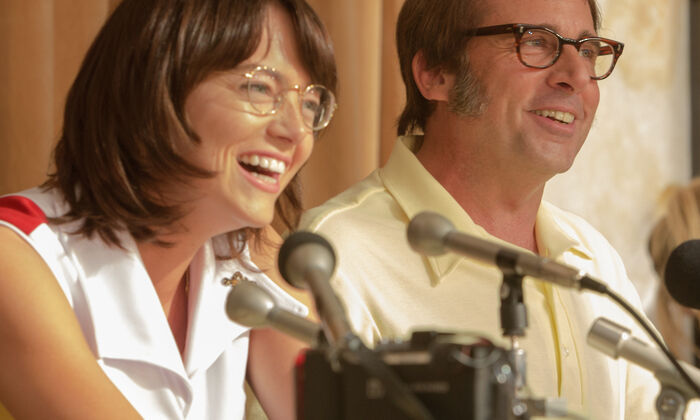Review: Harrowing sublimity in The Killing of a Sacred Deer
Following the latest film from Yorgos Lanthimos, Pany Heliotis attempts to unpack this resolutely difficult drama

The boundary between childhood and adulthood is tall and transparent; the moment one climbs over to the other side, one is but a glance away from going back. The slipperiness of this divide confronts all our affectations of maturity: our jobs, relationships, and families. It instils us with a painfully acknowledged childish nihilism – none of these things really matter. Yorgos Lanthimos’s The Lobster showed the extent to which our desires for real, adult love are merely childish yearnings for which we build systems to manage, endowed with dire (and fantastical) consequences. The Killing of a Sacred Deer continues this thread by asking how easily a child can tear apart these systems so earnestly built by their adult peers.
“Let this short review act as an invite to break through that tough layer into Lanthimos’s maelstrom of ethical despair”
Like in The Lobster before it, Lanthimos’s characters speak in the innocent monotone of people discovering speech for the first time. The impact here is to expose the utter artifice of their attempts at normalcy, and to expose the pettiness of adult discourse. A scene in a hospital corridor involves two doctors (Colin Farrell and Bill Camp) comparing their preferences for leather or metal watch straps, but their eerie flatness strips the exchange of all feeling, like bad actors reading from an atrocious script. To some extent, the characters are automata, merely going through the daily procedure of social interaction but with little existential reward.
We might think that the introduction of a despotic youth would bring some vigour to these otherwise stale exchanges, and the introduction of Barry Keoghan’s Martin certainly makes true on that promise, at least initially. But after a short while in both his and Farrell’s company, we recognise the same shared flatness; these are man-boys, trapped in the transitional stages of maturity; all that separates them is body hair, and those aforementioned affectations of adulthood.
To reveal too much about The Killing of a Sacred Deer would be to lessen its impact. The jump in genres it makes to its cataclysmic ending are rewards for what can feel like a meandering beginning. This is not to say the first half of the film is boring, but simply to say it aims to cover a lot of tonal ground which at times feels like a clueless sprawl: a visit to Martin’s mother’s house, a barbeque, an awkward dinner – all feel only minutely related to the plot.
However, all episodes contribute to what is the film’s, for lack of better words, humdrum ominousness which is crucial in preparing us for the film’s violent narrative shift, suggesting that all the eruptions of agony were merely latent beneath the surface. Adulthood is just a carapace over pain. To this end, let this short review act as an invite to break through that tough layer into Lanthimos’s maelstrom of ethical despair.
The Killing of a Sacred Deer continues Lanthimos’s excursions into the fallacies of adulthood, tackling his subject matter with clinical aplomb and exposing the moral and emotional compromises we make in our transition to ‘maturity’. Watch with a friend
 Arts / Plays and playing truant: Stephen Fry’s Cambridge25 April 2025
Arts / Plays and playing truant: Stephen Fry’s Cambridge25 April 2025 News / Candidates clash over Chancellorship25 April 2025
News / Candidates clash over Chancellorship25 April 2025 Music / The pipes are calling: the life of a Cambridge Organ Scholar25 April 2025
Music / The pipes are calling: the life of a Cambridge Organ Scholar25 April 2025 Comment / Cambridge builds up the housing crisis25 April 2025
Comment / Cambridge builds up the housing crisis25 April 2025 News / Cambridge Union to host Charlie Kirk and Katie Price28 April 2025
News / Cambridge Union to host Charlie Kirk and Katie Price28 April 2025





